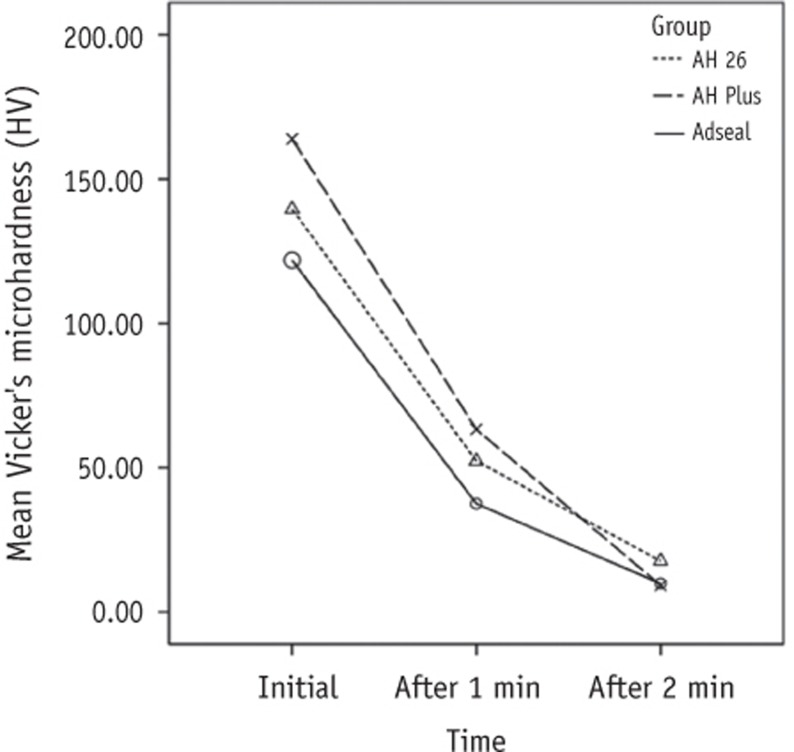1. Rubino GA, Akisue E, Nunes BG, Gavini G. Solvency capacity of gutta-percha and resilon using chloroform, eucalyptol, orange oil or xylene. J Health Sci Inst. 2012; 30:22–25.
2. Hülsmann M, Bluhm V. Efficacy, cleaning ability and safety of different rotary NiTi instruments in root canal retreatment. Int Endod J. 2004; 37:468–476. PMID:
15189436.

3. Kfir A, Tsesis I, Yakirevich E, Matalon S, Abramovitz I. The efficacy of five techniques for removing root filling material: microscopic versus radiographic evaluation. Int Endod J. 2012; 45:35–41. PMID:
21899565.

4. Punitha PG, Shashikala K. Evaluation of adaptation of resin based sealers Epiphany, AH plus and AH 26 to the root canal dentin by scanning electron microscope. Indian J Stomatol. 2011; 2:207–211.
5. Duncan HF, Chong BS. Removal of root filling materials. Endod Topic. 2008; 19:33–57.

6. Ramzi H, Shokouhinejad N, Saghiri MA, Samieefard A. Efficacy of three different methods in the retreatment of root canals filled with Resilon/Epiphany SE. Iran Endod J. 2010; 5:161–166. PMID:
23130046.
7. Grossman . Grossman's endodontic practice. 12th ed. New Delhi: Wolters Kluwer;2010. p. 278–307.
8. Shin SJ, Lee Y, Park JW. Evaluation of retrievability using a new soft resin based root canal filling material. J Korean Acad Conserv Dent. 2006; 31:323–329.

9. Taşdemir T, Yildirim T, Celik D. Comparative study of removal of current endodontic fillings. J Endod. 2008; 34:326–329. PMID:
18291287.

10. Lee KW, Williams MC, Camps JJ, Pashley DH. Adhesion of endodontic sealer to dentin and gutta-percha. J Endod. 2002; 28:684–688. PMID:
12398164.
11. Cohen S, Hargreaves K. Chapter 25. Nonsurgical endodontic retreatment. In : Roda RS, Gettleman BH, editors. Pathways of the pulp. 9th ed. Atlanta: Mosby;2005. p. 944–1010.
13. Bodrumlu E, Uzun O, Topuz O, Semiz M. Efficacy of 3 techniques in removing root canal filling material. J Can Dent Assoc. 2008; 74:721. PMID:
18845062.
14. Jainaen A, Palamara JE, Messer HH. Push-out bond strengths of the dentine-sealer interface with and without a main cone. Int Endod J. 2007; 40:882–890. PMID:
17877721.

15. Mamootil K, Messer HH. Penetration of dentinal tubules by endodontic sealer cements in extracted teeth and
in vivo. Int Endod J. 2007; 40:873–881. PMID:
17764458.
16. Jang JA, Kim HL, Her MJ, Lee KW, Yu MK. Effect of moisture on sealing ability of root canal filling with different types of sealer through the glucose penetration model. J Korean Acad Conserv Dent. 2010; 35:335–343.

17. Cho JY, Jin MU, Kim YK, Kim SK. The Influence of AH-26 and zinc oxide-eugenol root canal sealer on the shear bond strength of composite resin to dentin. J Korean Acad Conserv Dent. 2006; 31:147–152.

18. Kim CK, Ryu HW, Chang HS, Lee BD, Min KS, Hong CU. Evaluation of the radiopacity and cytotoxicity of resinous root canal sealers. J Korean Acad Conserv Dent. 2007; 32:419–425.

19. Kfir A, Rosenberg E, Tamse A, Tsesis I. Can epoxy resin-based endodontic sealers be softened within 1-2 min? An in vitro study with chloroform and xylene. Endod Pract Today. 2012; 6:189–194.
20. Hansen MG. Relative efficiency of solvents used in endodontics. J Endod. 1998; 24:38–40. PMID:
9487865.

21. Erdemir A, Adanir N, Belli S.
In vitro evaluation of the dissolving effect of solvents on root canal sealers. J Oral Sci. 2003; 45:123–126. PMID:
14650576.
22. Vajrabhaya LO, Suwannawong SK, Kamolroongwarakul R, Pewklieng L. Cytotoxicity evaluation of gutta-percha solvents: Chloroform and GP-Solvent (limonene). Oral Surg Oral Med Oral Pathol Oral Radiol Endod. 2004; 98:756–759. PMID:
15583552.

23. Martos J, Bassotto AP, González-Rodríguez MP, Ferrer-Luque CM. Dissolving efficacy of eucalyptus and orange oil, xylol and chloroform solvents on different root canal sealers. Int Endod J. 2011; 44:1024–1028. PMID:
21658077.

24. Mushtaq M, Masoodi A, Farooq R, Yaqoob Khan F. The dissolving ability of different organic solvents on three different root canal sealers:
in vitro study. Iran Endod J. 2012; 7:198–202. PMID:
23130079.
25. Vranas RN, Hartwell GR, Moon PC. The effect of endodontic solutions on resorcinol-formalin paste. J Endod. 2003; 29:69–72. PMID:
12540226.

26. Gambrel MG, Hartwell GR, Moon PC, Cardon JW. The effect of endodontic solution on resorcinol-formalin paste in teeth. J Endod. 2005; 31:25–29. PMID:
15614001.
27. Shokouhinejad N, Sabeti MA, Hasheminasab M, Shafiei F, Shamshri AR. Push-out bond strength of resilon/epiphany self-etch to intraradicular dentin after retreatment: a preliminary study. J Endod. 2010; 36:493–496. PMID:
20171369.

28. Jacob S, Lakshmi Narayann L. Effect of Chloroform, Xylene and halothane on enamel and dentin micro-hardness of human teeth. Endodontol. 2000; 12:3–6.
29. U.S. Department of Labor: Occupational safety and health guideline for Xylene. update 2013 May 22. Available from:
http://www.osha.gov.
30. Chutich MJ, Kaminski EJ, Miller DA, Lautenschlager EP. Risk assessment of the toxicity of solvents of gutta-percha used in endodontic retreatment. J Endod. 1998; 24:213–216. PMID:
9641120.








 PDF
PDF ePub
ePub Citation
Citation Print
Print




 XML Download
XML Download